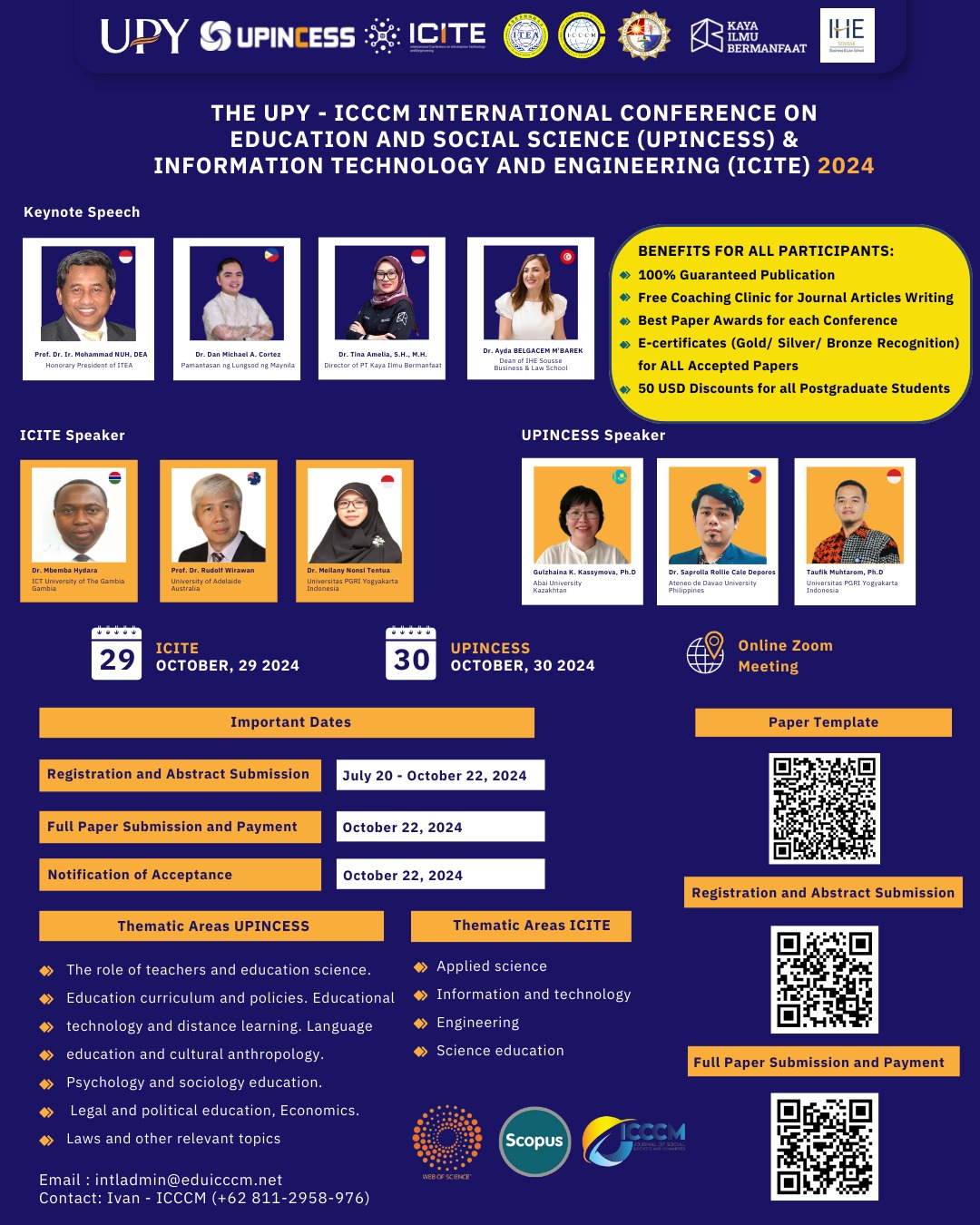"Decorum of Spirit-resonance and Vividness": Aesthetic Representation of Modern Chinese Boneless Paintings
DOI:
https://doi.org/10.53797/icccmjssh.v3i5.10.2024Keywords:
"decorum of spirit-resonance and vividness", Chinese modern boneless painting Aesthetic, RepresentationAbstract
The purpose of this article is to explain how the traditional aesthetic characteristics of "decorum of spirit-resonance and vividness" are represented in modern Chinese paintings. This article uses the qualitative research method of observing illustrations and document analysis, and through the research and analysis of modern boneless painters and their works, summarizes the performance of modern boneless paintings in terms of "decorum of spirit-resonance and vividness", thereby proving that modern boneless paintings have the aesthetic characteristics of bone painting continue on the basis of the aesthetic characteristics of traditional Chinese painting. It is a general summary of contemporary Chinese painting, which illustrates the innovative development of Chinese painting and also reflects the inclusiveness of contemporary Chinese painting.
Downloads
References
Gao, H. (2018). Lin Fengmian’s artistic outlook on modern Chinese painting. Art Literature, (04), 2-3. doi:10.16585/j.cnki.mswx.2018.04.002.
Liao Jialiang, & Huang Zongxian. (2012). The origin and evolution of Zhang Daqian’s splash-ink and splash-color art form. Search, (5): 3.
Li, X. D, & Zheng, Q. Y. (2013). Aesthetic China. Shanxi People's Publishing House.
Lin, R. X. (2004). Interpreting Tradition. Guangdong People's Publishing House.
Lin, J. (2023). Return to nature: Tian Liming’s neo-expressionist ink practice. Chinese Art Research, (01), 138-144.
Liu, X. Y. T. (2023). Master's degree in research on the "flatness" characteristics of Tian Liming's paintings. (dissertation, Hebei Normal University). Master's degree.
Mao, J. (2015) Explanation of Zhang Daqian's aesthetic thoughts on painting. Sichuan Drama, (02), 52-55.
Pan. L. Y., Lu, Q. X., Zhang, H., Wu, S. B. (2014). General History of Chinese Aesthetics, Song, Jin and Yuan Volumes, Jiangsu People's Publishing House.
Pan, Y. (2015). The significance of sketching. Chinese Art, (02), 10-15.
Qiu, W. J. (2022). The vivid conceptual interpretation and historical evolution of Qi Yun. New Beauty Domain (10), 21-23.
Song, S. J. (2019). Research on Zhang Daqian’s “Three Essentials” and “Three Beauties” Painting Aesthetic Thoughts. Journal of Suzhou Arts and Crafts Vocational and Technical College, (03), 62-65.
Tang, L. Y. (2014). General History of Chinese Aesthetics Sui, Tang and Five Dynasties Volume Jiangsu People's Publishing House.
Tao, Y. B. (2017). Pan Ying: Creating a new artistic form for traditional ink painting. Oriental Art ,(06), 88-97.
Wang, Y. S. & Xue, X. (1985). A summary of the development of Chinese painting aesthetics. Qilu Art Garden (00):16-20+80.
Wang Xiaobo, & Li Kaineng. (2011). Analysis of the internal logic of the formation of Zhang Daqian’s splash-ink and color art. Art Grand View, (6): 2.
Xia, S. Q. (1992). A brief exploration of Lin Fengmian’s aesthetic thoughts. Fine Arts, (12), 28-32..
Xiao, Y. (2014). General History of Chinese Aesthetics, Ming Dynasty Volume, Jiangsu People's Publishing House.
Ye, L. (1985). Outline of the History of Chinese Aesthetics. Shanghai People's Publishing House.
Yu-Fu, Y., Chang-Rong, L., & Jing-Xi, L. (2012). CHINESE DESIGN AESTHETICS MANAGEMENT THEORIES SERIES. Bulletin of Japanese Society for the Science of Design, 59(3), 3_39-3_48. https://doi.org/10.11247/jssdj.59.3_39
Zhang Lijuan. (2015) . On Zhang Daqian’s painting aesthetics. Mang Zhong ,(07), 143-144.
Zhu, L. Z., Xiao, Y., Sun, T., Cui, S. Q. (2014). General History of Chinese Aesthetics, Qing Dynasty Volume, Jiangsu People's Publishing House.
Downloads
Published
How to Cite
Issue
Section
License
Copyright (c) 2024 Duan Feifei, Issarezal Ismail, Hamidi Hadi, Ishak Bin Ramli

This work is licensed under a Creative Commons Attribution-NonCommercial-ShareAlike 4.0 International License.




